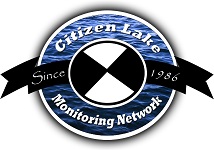
Native Aquatic Plant Monitoring
Native aquatic plant monitoring is a relatively new type of volunteer lake monitoring, which involves collecting data on a lake’s native aquatic plant community. These activities are repeated every 2-3 years to track changes in the abundance and distribution of these species. Aquatic plant identification training is provided by the CLMN Educator, usually at the lake being monitored. Native plant monitoring is broken down into three levels, which a volunteer can choose from depending on their familiarity with aquatic plant identification and the amount of time they have available.
Level I
Volunteers collect and preserve a sample of each aquatic plant species in their lake (or take pictures of each) and send them to the CLMN Educator for identification. The plants in the photos/samples will be identified and returned to the volunteer as a reference collection.
Level II
Volunteers note general categories of plants (submergent, emergent, and floating-leaf plants) around their lake on a map. They also collect a sample (or photograph) of each aquatic plant species to send to the CLMN Educator for identification, and these samples are returned.
Level III
Volunteers learn to identify the aquatic plants of their lake, and create a map of the general species distribution around the lake. Again, volunteers collect samples (or photographs) of each aquatic plant species for ID verification by the CLMN Educator, and these are returned to the volunteer.
